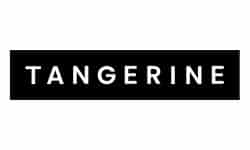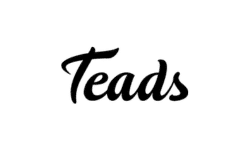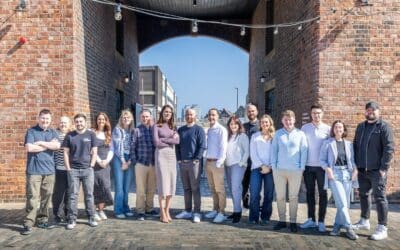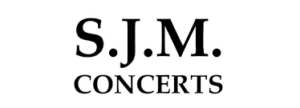The highly anticipated Prolific North Live event returned to Manchester yesterday, where industry experts revealed all the latest trends and insights across media, marketing, and digital for 2025 and beyond.
At Manchester Conference Centre at Pendulum Hotel on 16 October, there were two stages jam-packed with content covering everything from consumer trends, tips for marketing mavericks and predictions.
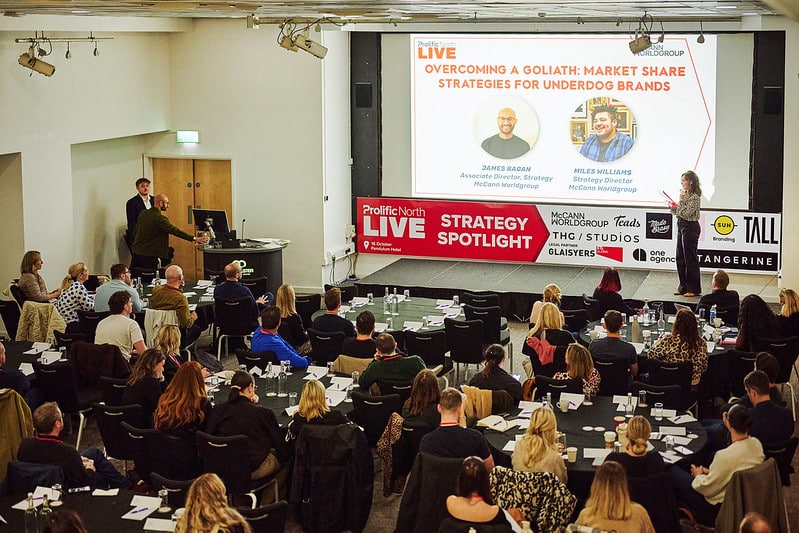
The Strategy Spotlight stage kicked off with a special session on Overcoming a Goliath: Market share strategies for underdog brands with James Bagan, associate director, strategy, at McCann Worldgroup.
There are plenty of challenges underdog brands face from resource constraints to limited brand awareness, while market leaders are likely to get more distribution. Market leaders might deploy defensive strategies to prevent challenger brands from taking a slice of sales or customers – the key is for underdog brands not to be reactive as this can lead to mediocrity.
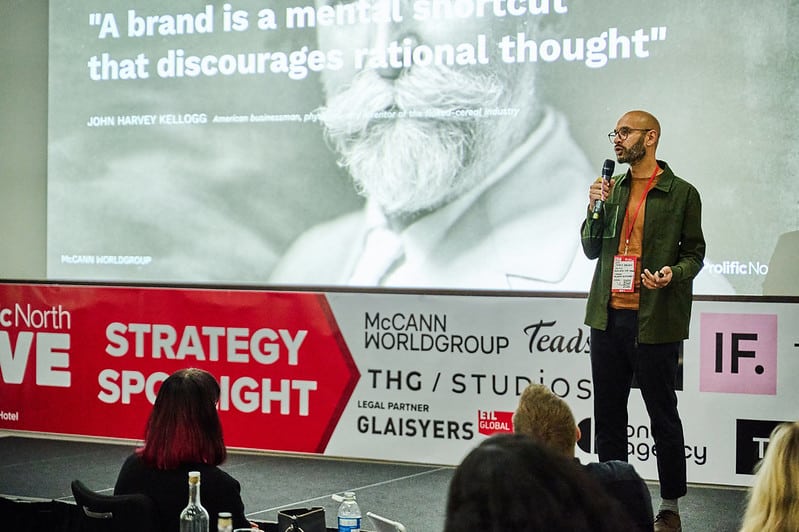
Instead, challenger brands need to ‘play the long game’. His top five market share strategies included: have a big focus on market penetration over loyalty; get the bottom of the funnel right; measure the right things; be a maverick and be ‘distinctive’ with creative work; and finally don’t back down and continue to be consistent when competing with goliath brands.
Andy Johnson, commercial director at Sun Branding was up next, sharing vital insights on designing for the ‘Third Age’ and why brands can’t afford to ignore the over-65s. There is a ‘massive growth’ opportunity here if brands get it right for the over 65s as they are the ‘biggest growth market’.
Despite this, the over 65s are still widely misrepresented and there are plenty of myths still swirling around about what this audience sector really looks like. Johnson debunked some of those myths – and he was even joined by volunteers from the audiences to test his theories and showcase the importance of inclusive packaging and design for brands to successfully tap into this lucrative market.
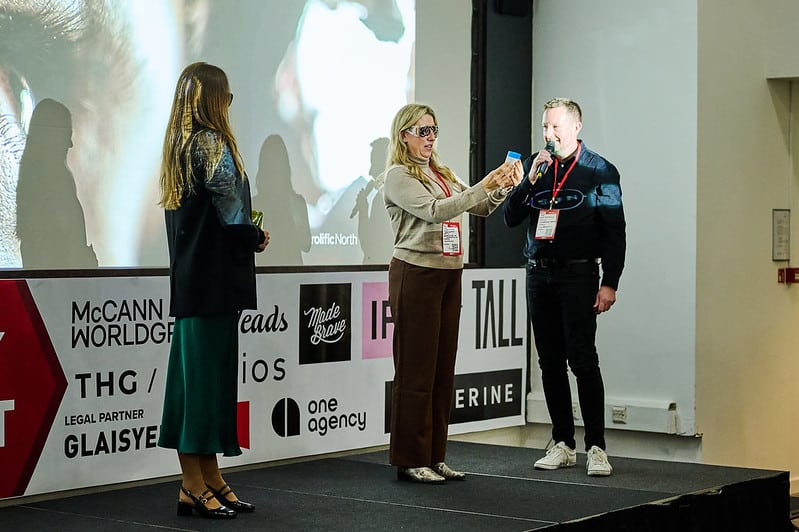
A lively panel discussion followed, unpacking the retail trends worth paying attention to with brand-side marketing experts. Gareth Turner, founder of Big Black Door, was joined by Charlotte Dewhurst, marketing director at Matalan; Jayne Andrews, marketing director at Fentimans; Ross Gylanders, ecommerce lead at Sauce Shop; and Duncan Burns, head of marketing at Merry Hill Shopping Centre.
On loyalty, Charlotte Dewhurst said it is a “massive focus” at Matalan and it can help to build brand value through marketing, communications and socials, to give something back to customers.
Yet for Jayne Andrews, there needs to be more than loyalty for some brands to grow and she challenged how some retail supermarket loyalty schemes operate. On embracing ‘shiny new things’ in the world of retail, Ross Gylanders said lots of ‘new’ trends have actually been around for a while – like AI. Brands should test things out, considering what works well for them and their customer base first.
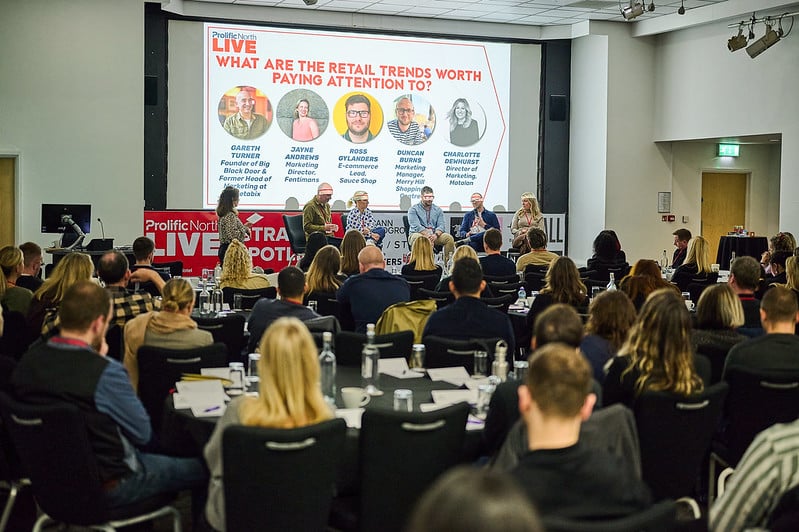
For Duncan Burns, new tools can help improve existing experiences in retail and there shouldn’t be a ‘us vs them’ mentality when it comes to physical stores and the online experience: “You have to embrace shifts to online and there is always a place for physical retail”.
Matalan has recently bridged the gap between the experiences customers receive online and in-store by introducing an AI assistant, aimed at helping customers build outfits which delivers a ‘true omnichannel experience’.
When it comes to channels, Andrews explained Fentimans is using a blend of traditional and new channels but having a good idea at the heart of a campaign and consistency is key. TV remains the ‘trusted channel’ used by the brand, especially on VOD through the likes of ITVX, and TikTok is used for reach too.
The discussion wrapped up with a question posed by Gareth Turner, on how brands can win market share without market-leading budgets. Delving into some of Fentimans’ recent interactive campaigns with outdoor murals, Andrews said it helps create “important moments” and brands should be “smart with money to make a campaign feel bigger”.
Gylanders said The Sauce Shop and other challenger brands should “not be afraid to try a wild idea” and the key is to continously test and learn.
Brands need to “take stock” and remain consistent to win, said Burns, while Dewhurst explained brands can win by having strong creative, being clear about what they stand for, and being distinctive. Marketers should be braver and brands should not be bland, agreed Turner.
We discovered how to go about selling ‘brave’ to the board during an intertaining talk with Jamie Axford, creative director at MadeBrave. In a world fixated on jumping on latest trends, he explained how the simple art of making and selling great creative work can at times be forgotten.
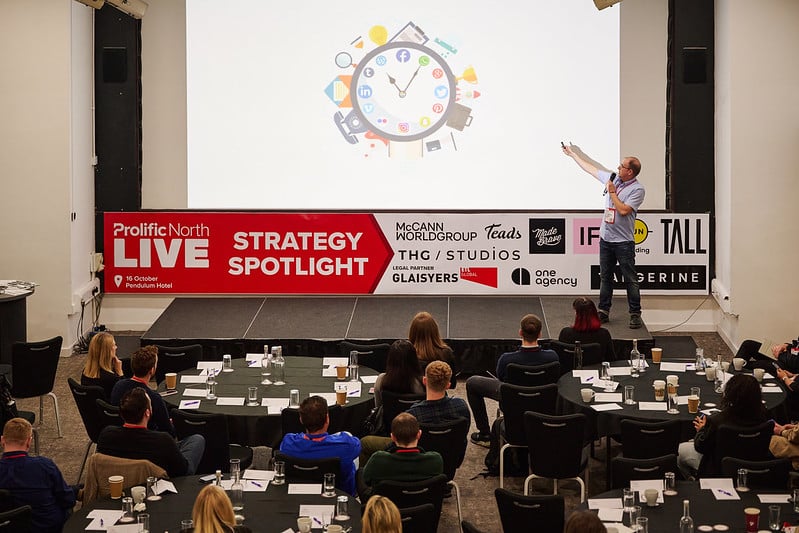
Forget FOFU (the fear of f*cking up) he urged, as brands don’t have the time or resources to be boring. The top three things he tells creatives to remember is to look at insight, then the idea, followed by the execution.
Over on the Trend Setters stage, the day kicked off with a fun, interactive session from the team from IF. who debunked the myths surrounding TikTok and how brands can leverage it for major growth in 2025.
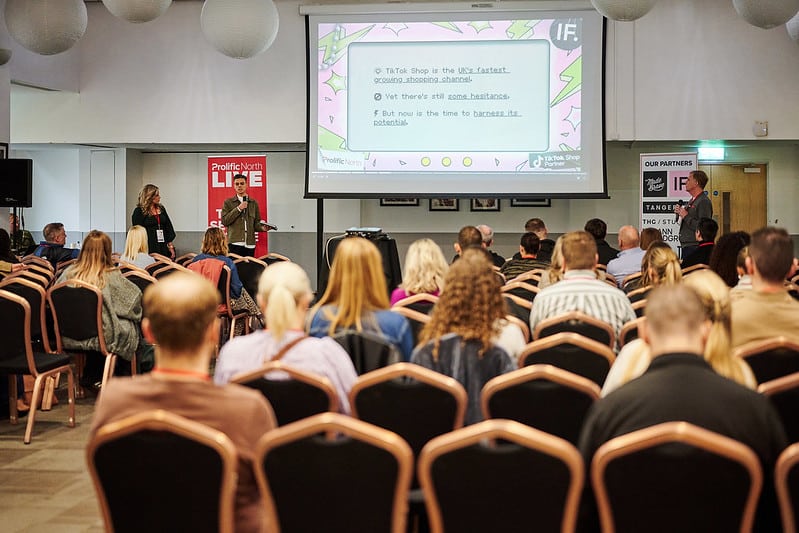
It was a jam-packed session hosted by Christian James, MD and director, planning; Myke Hamilton, director, client service; and Laura Selby – director, digital at IF, who shared that TikTok shop is now the fastest growing shopping channel, yet some brands are still hesistant about using the platform. As TikTok is shaping how people discover, buy, and interact with brands, the trio advise that it’s now time for brands to embrace this booming, influential channel and tap into its potential.
Next up, there was a peek behind the curtain of Specsavers’ social media team during a lively session with Nat Chatburn, business director at Tangerine and Jonathan Welsh, business director at Tangerine.
It was a fascinating glimpse into how Tangerine works with the likes of Iceland and Specsavers, plus how the agency builds ‘superbrands’ by capturing and converting attention through culturally relevant, audience-first strategies.

Tangerine does this by focusing on three key areas: powerful narratives, moments that matter, and building communities. As 85% of brand content on social media platforms is often ignored and it is becoming ‘harder and harder’ for brands to stand out, Tangerine stays one step ahead on social media by spotting valuable ‘moments’ and newsjacking opportunities.
From Specsavers’ viral campaign to hand-deliver Gary Barlow a fresh pair of specs after his glasses broke during Take That’s global tour to scoring big with a Euro billboard campaign, the duo explain there has to be “pace, speed and agility” in creating those timely ‘moments’ and it is always made easier if there is a good agency/brand relationship in place.
When it comes to building communities, engaging with people on social media and having two-way conversations can even help build out content for a new campaign. However, Jonathan Welsh shared one ‘anti-trend’, which is to shift the way brands use social platforms like X, formerly Twitter which is typically used for news.
For Iceland, the supermarket recently released a witty statement on X rather than a traditional press release to demand that rivals stop selling prawn rings. The post hit over 2.5M views – and even the BBC got in touch about the story. “If you know your audience, don’t be afraid to use X, but use it as a news-first channel,” he added.
A panel filled with brand-side social media pros followed, delving into the evolving social media landscape. Steve Kuncewicz – partner ‑ head of creative, digital and marketing at Glaisyers steered the panel as moderator, and he was joined by Naomi Horan, social media and influencer manager at CLOUD NINE HAIR; Conor Glavin, ex head of social at Au Vodka; and Catherine Jell, head of social at Nadine Merabi.
The panel discussed the latest shifts impacting platforms and how they’re adapting their content strategies, plus they chatted about the growing use of TikTok as a channel for luxury brands, how the role of influencers are evolving, and a debate on when – or when not – to jump on trends.
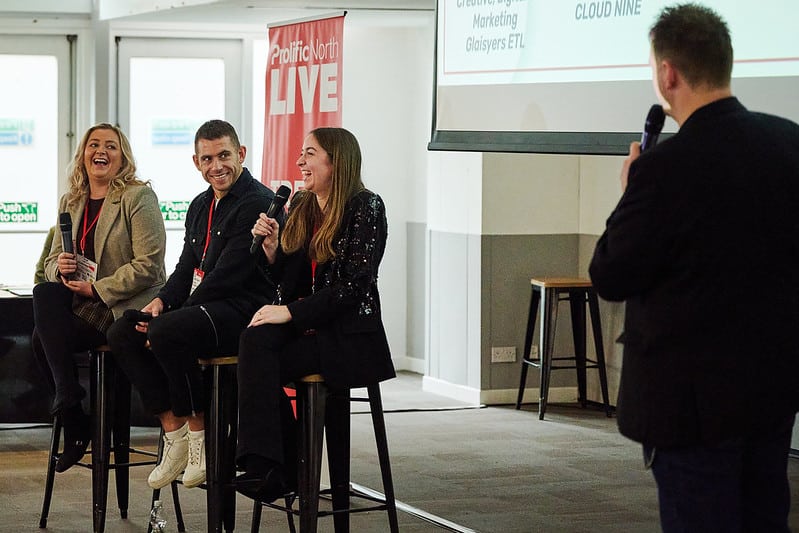
We delved into lessons from working with brands like LEGO with Andy Beckwith, creative director at Tall. It was a fascinating session, as Beckwith gave a glimpse into how the Leeds agency works with LEGO and the importance of embedding a brand’s core values into every interaction across an organisation. For brands to stand out from the crowd, he urged the room to “be playful” and continue to encourage staff to be creative.
Natalie Coleman, regional group account director at Teads, presented an insightful talk on Simplifying today’s fragmented media landscape.
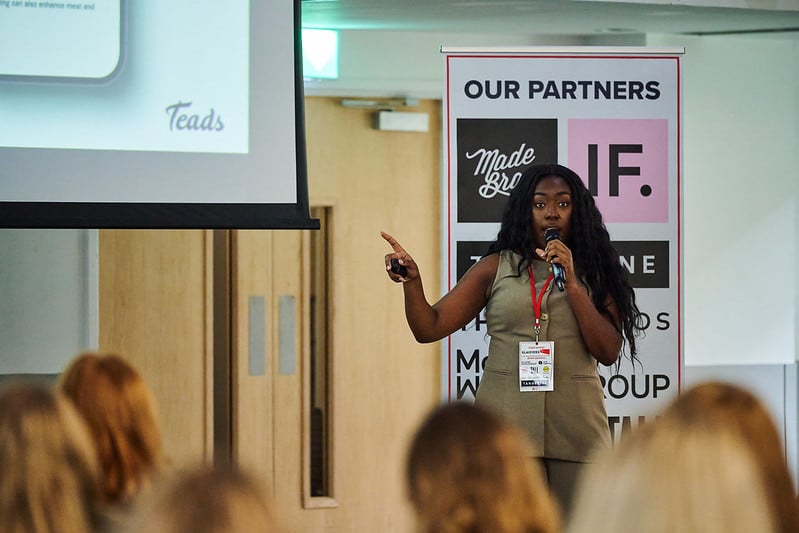
It was a session packed with valuable takeaways for marketers, touching on the challenges they face as advertising is entering its next iteration with CTV opening up new capabilities and opportunities for brands to connect with consumers. But she also shared a number of simple solutions, to support marketers looking to optimise creative for omnichannel advertising.
Next up was a session filled with key takeaways on how brands can win by finding their ‘zag’ with Jo Jeffers, head of strategy at THG Studios, who explored the approaches and tactics for challenger brands to cut through and outpace established brands.
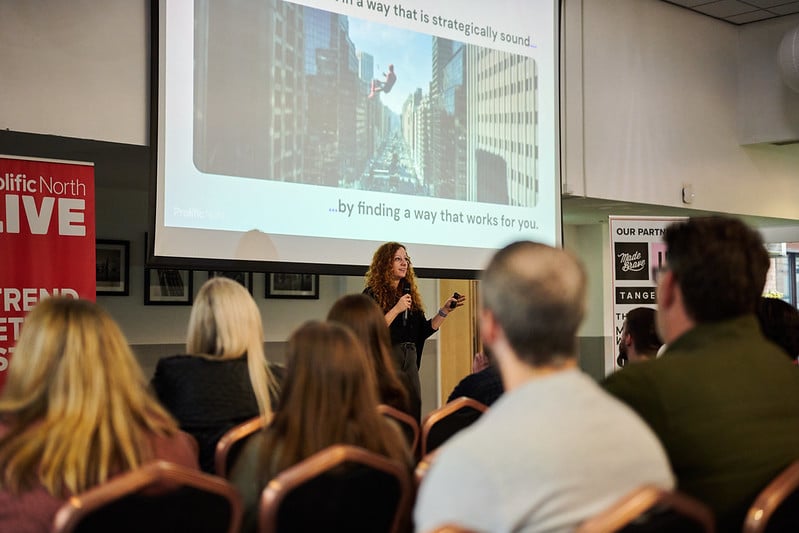
Challenger brands have a number of key strengths, thanks to having: a more agile operation, less complex structures with fewer decision-makers and red tape, the ability to ‘push boundaries’, and that it is much easier to become closer to customer communities.
Two key takeaways were for challenger brands to find credibility and know their tone of voice. But underdog brands should also be “mindful of costs” in ideation and understand which market-leading brands they are up against.
As we look towards 2025, Amy Cully Steele, head of strategy at One Agency and Alex Randles, research and insight manager at One Agency, were on hand to discuss the key trends shaping the way people will discover, purchase, and engage with brands across all industries, with a focus on beauty and D2C.
From AI-driven personalisation and the rise of social commerce to the growing importance of sustainability and immersive experiences like AR and VR, the duo explored how these innovations will redefine the consumer journey.
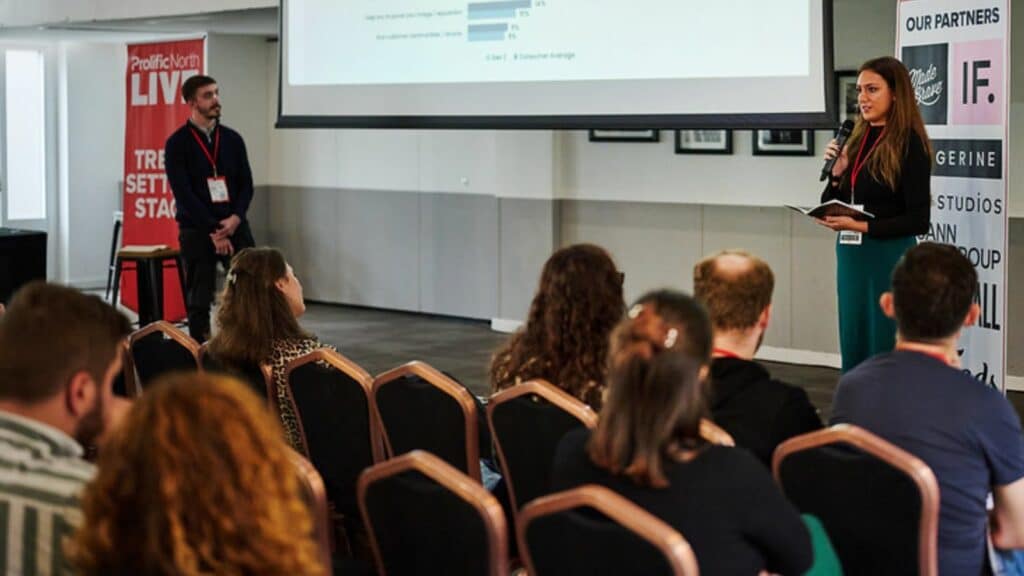
A key trend is how consumers are now using social platforms such as TikTok as search engines. As it can offer more tailored content, TikTok is now “transforming how users discover and engage” with brands.
One of the two key takeaways from the session were on the rising importance of employee-generated content (EGC) for brands, and, if used correctly, can be an “incredibly powerful tool”, plus the growing importance of sustainability as customers are now becoming much more vocal if they don’t agree with a brand’s values.
The final session was presented by Carl Hallam, co-founder of Vega, who travelled all the way from Gibraltar to tackle the short-termism cycle in marketing strategy.
Drawing from a career split 50/50 between working at an agency and on the client side, he explained the cost of chasing short-term wins and flashy metrics on both sides of the lens.
Taking an anti-trend approach, he presented a reminder for brands to focus on a solid strategy as marketing fads come and go. Short-term thinking “kills businesses” and marketers often focus too much on correlation, so he urged brands to not chase every trend, trust instincts, as strategy is “timeless”.
Thanks to everyone that joined us for a fantastic day at Prolific North Live and a big thank you to our legal sponsor Glaisyers and all event partners below.
Legal sponsor
Event partners





